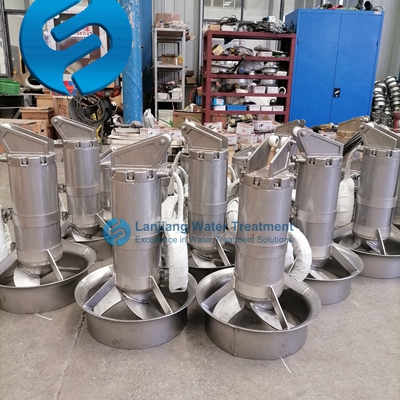The maintenance of sewage treatment equipment is very important to ensure the normal operation and prolong the service life of the equipment. The following are some important precautions for sewage treatment equipment maintenance:
First, regular inspection and maintenance
1. Equipment inspection: Regular comprehensive inspection of sewage treatment equipment, including the working status of equipment, wear, connection and fastener tightness. This helps to identify and resolve problems in a timely manner, preventing failures from spreading.
2. Cleaning and maintenance: Regular cleaning of equipment, especially important components such as filtration devices and aeration systems, to prevent accumulation from affecting equipment efficiency. Maintaining the cleanliness of the equipment is the basis for maintaining its normal operation.

Second, real-time monitoring and data recording
1. Real-time monitoring: The use of modern management system to monitor the running status of sewage treatment equipment in real time to ensure that all parameters are normal. This helps detect anomalies and take action in a timely manner.
2. Data recording: Record the operating data of the equipment, including flow rate, pressure, temperature, etc., to facilitate analysis and adjustment of operating strategies. By analyzing the running data, you can find the problems in the running of the device and take appropriate maintenance measures.
Third, chemical drug management
1. Drug selection: Select appropriate chemicals according to the characteristics of sewage, such as flocculants, disinfectants, etc. The right choice of drugs can improve the treatment effect and reduce the operating cost.
2. Drug storage: To ensure the safety of chemical storage and prevent leakage or other safety accidents. The storage environment should comply with relevant safety regulations to avoid harm to personnel and the environment.
3. Drug dosing: dosing chemicals according to the correct dosage and way to avoid excessive or insufficient influence on the treatment effect. Personal protection and environmental protection should be paid attention to during the dosing process.
Fourth, equipment component maintenance
1. Grille and valve: regularly clean the sludge in front of the grille to prevent debris from affecting the normal operation of the equipment. At the same time, check the lubrication part of the valve regularly and add grease to ensure flexible rotation and prevent rust.
2. Pump equipment: regularly check the operation of the pump, if found abnormal should be timely maintenance or replacement. The standby pump should also be regularly maintained to avoid failure to work properly when needed.
3. Electrical system: Regularly check the electrical system of sewage treatment equipment, including power supply, circuit, control components, etc., to ensure its normal operation. At the same time, keep the electrical system dry and clean to prevent water vapor and dust from entering the electrical equipment.
Fifth, safe operation and maintenance
1. Operation training: Operators are regularly trained to improve their ability to operate equipment and troubleshoot faults. Ensure that the operator is familiar with the operating procedures and precautions of the equipment.
2. Safety measures: Ensure that there are perfect safety measures, including wearing appropriate protective equipment, setting emergency stop button, etc. Pay attention to safety during maintenance and comply with relevant safety regulations.
Sixth, sludge treatment and waste recycling
1. Sludge treatment: Effective treatment of the generated sludge, such as dehydration, stabilization treatment, etc., to prevent secondary pollution. At the same time, the possibility of sludge recycling is explored, such as using the treated sludge for soil improvement or energy recovery.
2. Waste recycling: Other waste should also be classified and recycled to reduce environmental pollution and save resources.
To sum up, the maintenance of sewage treatment equipment needs to consider multiple aspects, including regular inspection and maintenance, real-time monitoring and data recording, chemical management, equipment component maintenance, safe operation and maintenance, as well as sludge treatment and waste recycling. Through scientific management and maintenance measures, we can ensure the efficient and stable operation of sewage treatment equipment and extend its service life.
Post time:2024-07-05